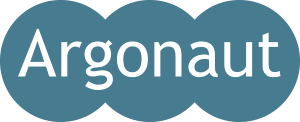Iranian festivals
All major holidays are based on the Islamic and/or Persian calendar meaning they do not have set dates in the Gregorian calendar.
- Norooz – Iranian New Year marking the start of Spring. This is the equivalent to Christmas – everything closes down for 1-2 weeks as the whole country goes on holiday.
- Ashura – commemorates the martyrdom of Imam Hussein at Karbala. Street processions, all in black. A mixture of funeral and carnival.
- Eid el-fetr – the Eid to celebrate the end of Ramadan. Usually 2-3 holiday which is spent with family.
Iranian celebrities you should know
- Ali Daei – former Iranian footballer.
- Dariush – 70s pop mega star.
- Googoosh – singer and actress best known for her work in the 1970s.
- Jafar Panahi – film maker.
Iranian food taboos and favourites
Food is a shared experience. Eating alone is a taboo. Food is balanced and rarely throws anything unexpected to the foreigner. Expect lots of meat and salad with kabob being the national favourite along with classics such as ush (soup), gorme sabzi (meat stew) and doogh (yoghurt drink). Iranian rice dishes are perhaps the best in the world.
Iranian cultural keyword
Taarof is a Persian-specific cultural concept centred around politeness, communication and saving face. If you feel someone is showing taarof by not accepting something from you, say “taarof nakon” meaning “I am offering this to you without any strings”.
Iranian landmarks and places of cultural significance
- Mount Damavand – mountain tied to Persian myth and legend.
- Mashhad – shrine of Imam Reza and place of pilgrimage.
- Azadi stadium – 100,000 seater football stadium in Tehran.
Historical figures in Iran
- Ferdowsi – author of Shahname.
- Darius – great Persian king.
- Mohammad Mosaddegh – deposed Prime Minister.
- Ayatollah Khomeini – figurehead of ’79 Revolution.
Languages and foreigners in Iran
Farsi is crucial in Iran. Turkish is well understood both due to the ethnic Azeri population as well as the popularity of Turkish TV dramas. English is now widely spoken, especially among under 30s, in Tehran and some of the larger cities. Arabic is also spoken in the south as well as in the more religious centres such as Qom and Mashhad.
Iran’s constitution says the country’s “official and educational language is Persian, but the languages of other ethnic groups may also be used.” These include Kurdish, Azeri Turkish, Baluchi and Turkmen although in practice their use is limited officially, not encouraged.
Music genres in Iran
Iranian pop is by the far the most listened-to music. Older generations will listen to classical Persian music. The more religious do not listen to music. Among the younger generations, foreign popular music is now as popular as local music.
Popular sports in Iran
- Football.
- Wrestling.
Symbols of Iranian identity
- The Shahname.
- Hafez.
- The Faravahar.
- Azadi Tower.
- The Samavar.

